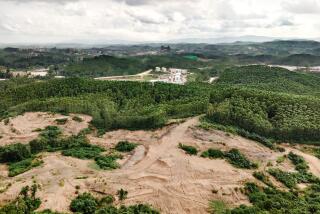Baghdad is reemerging from 15 blood-soaked years, but the city now barely functions
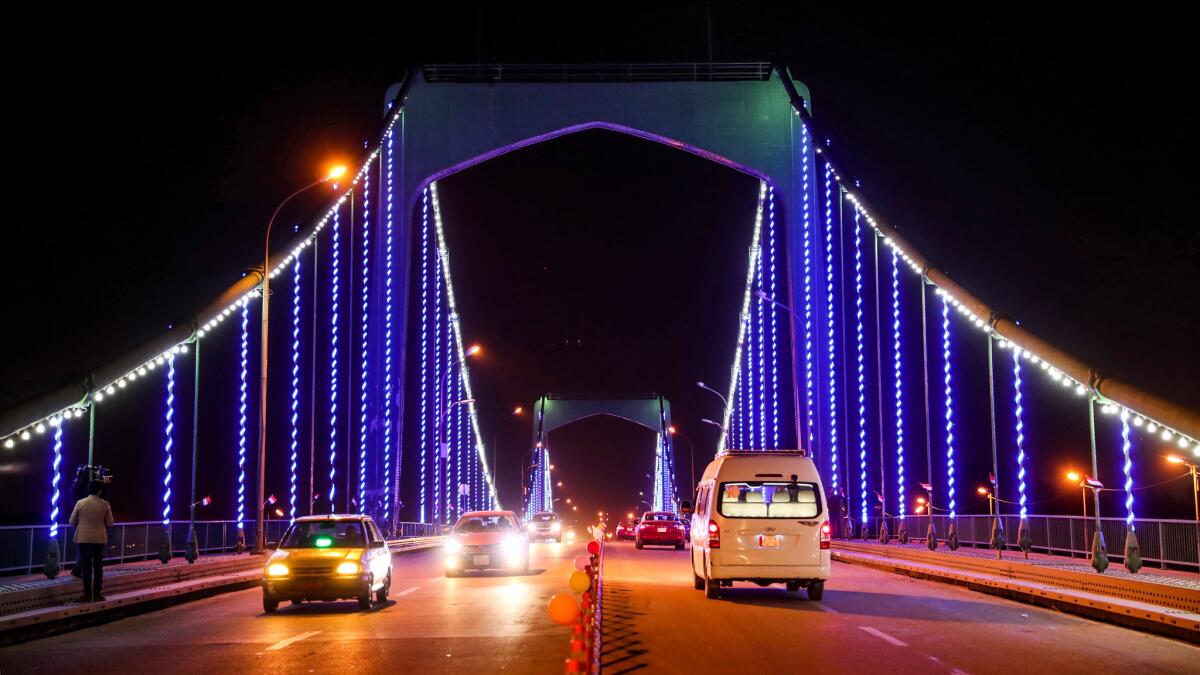
Reporting from Baghdad — For weeks now, Capt. Ghassan Ghani and his team of workers, cranes and long-bed trucks have stripped away what has been a fixture of this city since the 2003 U.S.-led invasion: the 12-foot concrete barriers lining Baghdad’s major roads and buildings as protection from suicide car bomb attacks.
Ghani, a member of Baghdad Operations Command, supervised one Tuesday evening as a crane lifted one of the slabs, known as T-walls, that had long hulked over a road in the Iraqi capital’s downtown. As the T-wall swung away, a shock of green emerged — an unkempt swath of palm trees adorning the corner of a government building.
“It’s time to do this,” said Ghani, “so that the old Baghdad can finally be seen again.”
Since late last year, about 12,000 T-walls have been carted away to a disused airport in central Baghdad, a temporary stop until they’re installed beyond the city’s outskirts.
It’s another sign of a city shuffling off the vestiges of 15 blood-soaked years that made Baghdad’s name a byword for death, and that culminated last year in the destruction of the militant group Islamic State’s self-proclaimed caliphate in Iraq.
Yet for many, the flush of that victory has given way to the realization that Baghdad, once a jewel among Arab capitals and now on the cusp of achieving mega-city status, is barely functional.
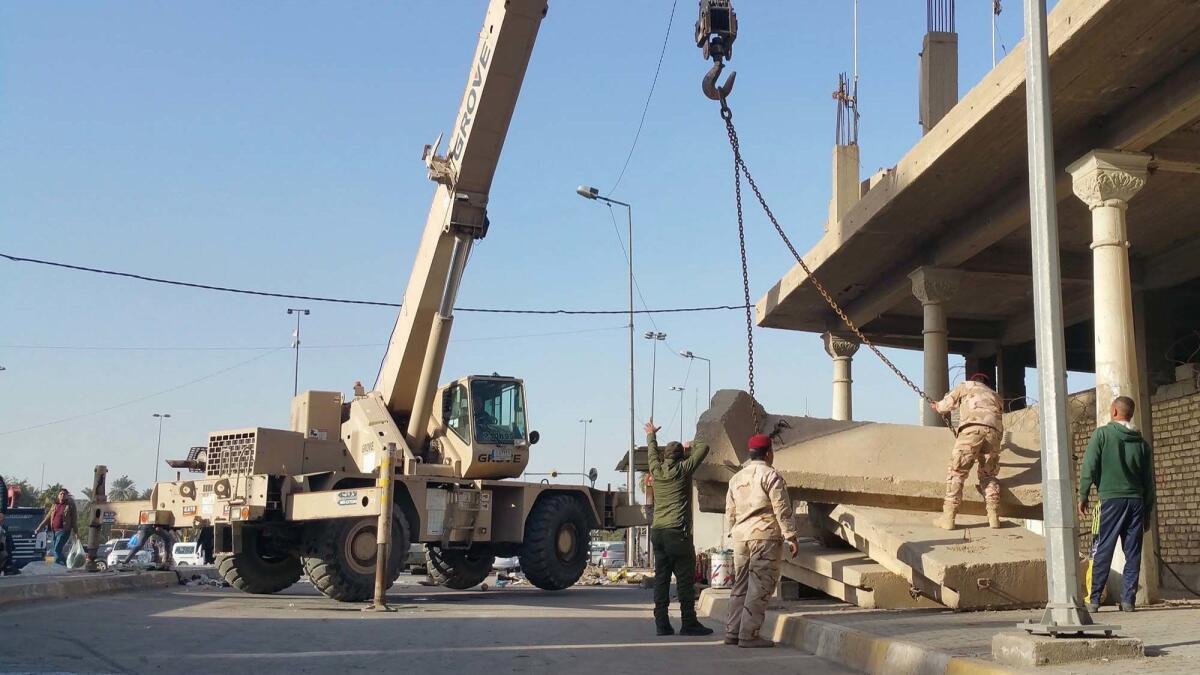
The daily reality for more than 9 million Baghdadis is bumper-to-bumper traffic jams on roads unrepaired since before the U.S.-led invasion, and hours-long electricity cuts that turn broiling summers lethal. People are desperate for jobs, with almost a quarter of the working-age population unemployed or underutilized, according to the World Bank.
Those same problems afflict much of Iraq; last year, they spurred violent protests in the southern city of Basra.
The demonstrations felled hopes of a second term for then-Prime Minister Haider Abadi, the leader credited with saving the country from Islamic State but who couldn’t deliver the economic and political reforms needed to jump-start the economy.
His successor, Prime Minister Adel Abdul Mahdi, has so far done little better. Eight months after last year’s elections, the independent with few allies in parliament has yet to form a government or pass a federal budget.
“There’s nothing the prime minister can do other than removing concrete barriers. He’s the prime minister of T-walls,” political commentator Abdul Rahman Jebouri said.
“It’s become so bad that even removing cement blocks is an accomplishment.”
Still, it’s hard to dispute that the capital is safer.
There were no car bombings in 2018, said Lt. Gen. Jalil Rubaie, head of Baghdad Operations Command. That’s a remarkable contrast with previous years, when Islamic State and its precursors carried out hundreds of attacks, often multiple bombings on the same day.
The car bombs killed hundreds and forced the government to balkanize Baghdad with T-walls and dozens of checkpoints. The city became a labyrinth, its roads inexplicably cut off and its green-lined boulevards obscured by a T-wall crust of drab concrete.

Times staff writer Nabih Bulos reports from the streets of Baghdad.
Other incidents, such as shootings, robberies and attacks with smaller roadside bombs and hand grenades were also down 40% compared with 2017, said Michael Knights, an Iraq expert at the Washington Institute for Near East Policy who collects U.S. government and Iraqi open-source data on violence in the country.
That, along with a 2015 lifting of a midnight curfew, has resulted in a resurgence of Baghdad’s legendary nightlife. Street cafes teem with young men sporting gravity-defying mohawks or gel-slicked pompadours. Musicians, theaters and comedy shows are popular, and Mansour Mall, Baghdad’s biggest, was packed in December with families posing in front of a Christmas tree installation.
Later in the evenings, dedicated drinkers materialize before rows of liquor stores, tombola joints and “super” nightclubs (essentially strip clubs) on Abu Nuwas Street.
In addition to removing T-walls, authorities have loosened other security measures, mostly to improve conditions for drivers of the 1.8 million cars registered in Baghdad. (Hundreds of thousands more enter the city from all over the country every day.) Over the last year, 35 checkpoints have been removed, said Rubaie.
Last month, to mark the first anniversary of the government’s victory against Islamic State, Abdul Mahdi ordered the partial opening of the 14th of July Bridge, a major thoroughfare linking Baghdad’s banks across the Tigris River that has been closed since the start of the war in 2003.
The move cuts the hourlong journey across the river to five minutes by allowing motorists to cross through the reviled Green Zone, a 4-square-mile area of lawns and wide, pristine boulevards that housed late leader Saddam Hussein’s palaces and, after the invasion, the headquarters of U.S. civilian and military authorities, international diplomats and aid offices. It also houses the parliament building, the seat of the new Iraqi government.
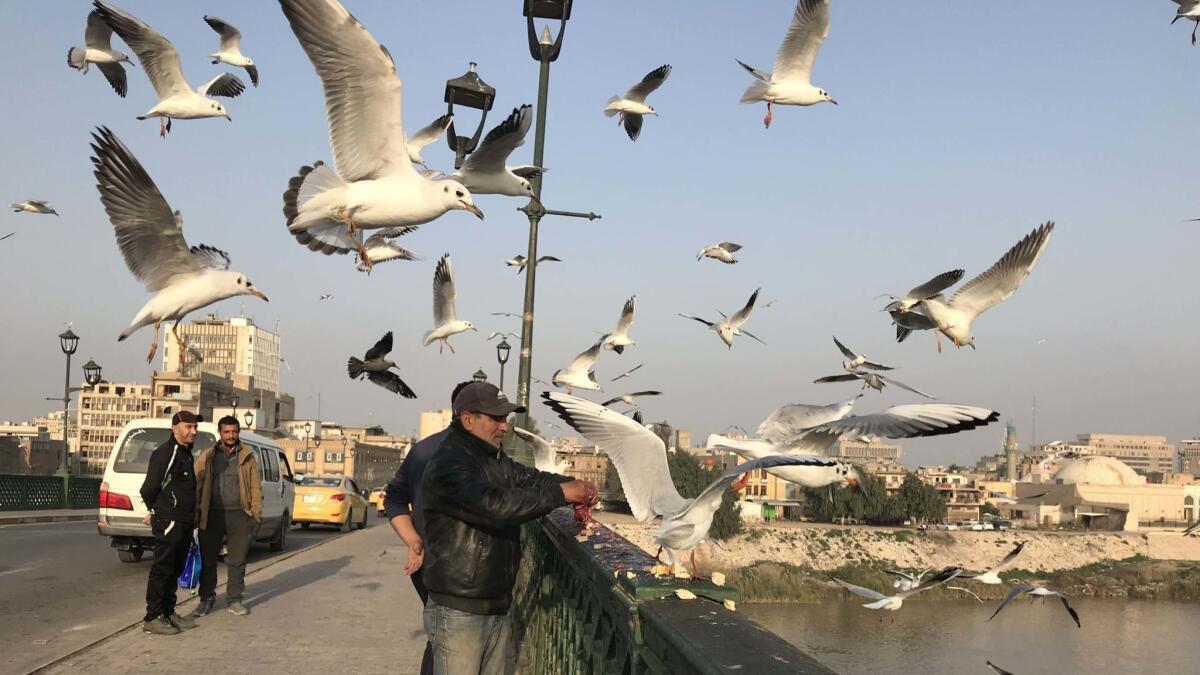
It’s usually closed to most Iraqis, save for their politicians, who insulate themselves from the privations the rest of the population endure every day. (Traffic lights here are unaffected by the intermittent electricity.)
But for many, access to the bridge is hardly a point in the government’s favor.
“You’re like someone whose jacket was taken. You’re cold. Years later, they give it back to you and expect you to say thank you?” said Hussam Mahdawi, an unemployed 45-year-old man visiting Mutanabi Street, the heart of Baghdad’s book-selling district.
Mahdawi’s thoughts echoed those of Mohammad Ali Agha, an out-of-work anthropologist out with his wife and three children one Friday evening at the Zawra amusement park.
“Electricity, water, basic schooling.… It’s shameful we have to think of such basic things. A rich country like ours, we should be talking about human rights and higher education,” said Agha, adding that his children were packed in classrooms with 60 other students.
“And the politicians who put us in this mess never go away,” he said. “I want someone with different ideas, someone who would separate religion from the state and bring something new.”
Zawra Park, which opened in 1971 and which includes a 200-acre zoo, is the story of Baghdad in miniature: a once beautiful area that has fallen in disrepair because of neglect, conflict and corruption.
The problem isn’t even the buildings that were destroyed after the U.S. invasion. It’s the people themselves who are now destroyed.
— Salem Aseel, 56-year-old Baghdadi
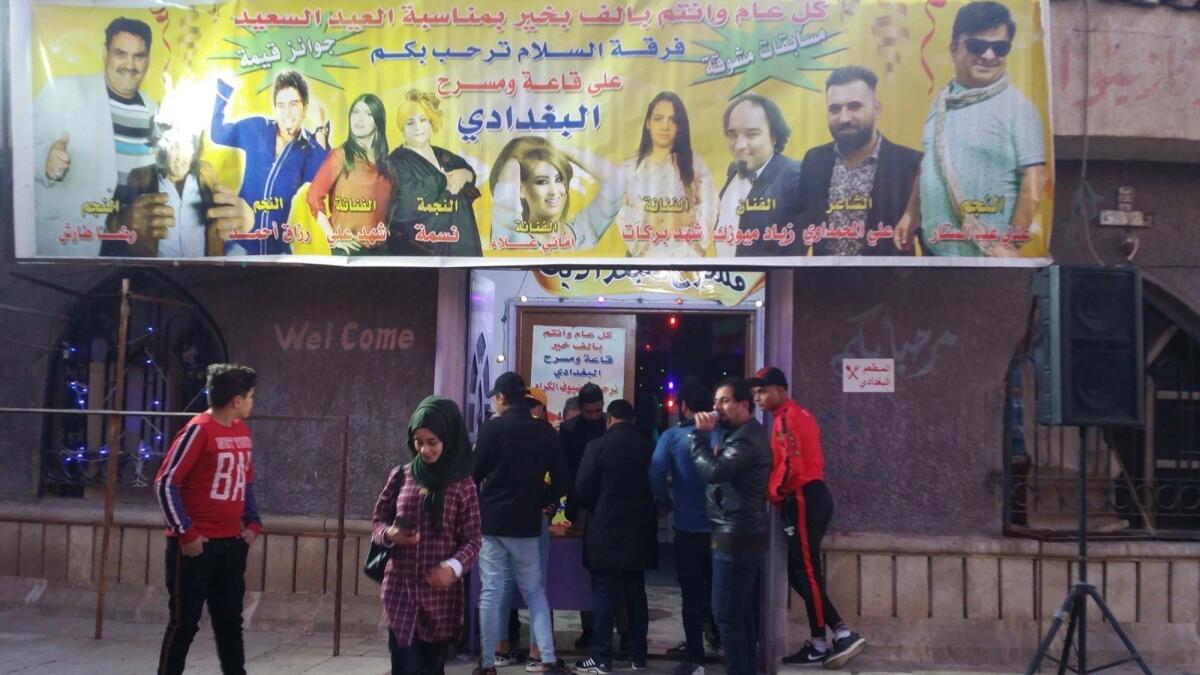
Other monuments, such as a gargantuan pair of crossed swords — held by hands modeled after those of Hussein — that loom above Grand Festivities Square or the 673-foot Baghdad TV tower, have also faded.
At least Hussein built something, said Salem Aseel, an unemployed 56-year-old.
“No matter what these politicians do, it won’t compensate for what they did these 15 years,” said Aseel. He spoke of buildings raised around the time of the birth of the Iraqi Republic, after Iraq’s monarchy was toppled in a 1958 military coup. “It was a golden era.”
But, he added, “the problem isn’t even the buildings that were destroyed after the U.S. invasion. It’s the people themselves who are now destroyed.”
Before it can tackle grandiose projects, Iraq now faces the formidable challenge of rebuilding a country ravaged after more than four years of battling Islamic State. The government estimates that will cost more than $88 billion.
Yet the 2019 budget, which amounts to more than $110 billion in total spending, has 75% set aside for operational costs, experts and politicians say, with relatively meager allocations for reconstruction in areas clawed back from the extremists.
Electricity, a long-standing issue, will get 8% of the budget.
But the government will need to rehabilitate a grid that produces an average of 15,000 megawatts, although peak demand reaches 22,000 megawatts, said Electricity Minister Luay Khatteeb. Islamic State’s looting of power lines has reduced power generation by at least 4,500 megawatts, he said.
Job creation is also a major demand, but political blocs have chosen to fatten an already bloated public sector instead of growing the private sector.
And all this relies on oil prices holding steady as well as the U.S. granting a waiver for Iraq to ignore sanctions on Iran — both questionable scenarios.
Much also depends on keeping Islamic State at bay. Knights, the Iraq expert, said that authorities had succeeded in making Baghdad safer than it has been in years, but “that’s also because [Islamic State] had put the majority of its power defending cities it controlled.”
But with those areas no longer under its grip, the extremist group has returned to its guerrilla warfare roots.
Last month, Islamic State struck the northwestern city of Tall Afar with a car bomb that killed three people and wounded 13 others. Many believe it’s only a matter of time before it will hit Baghdad.
“It’s a choice by the enemy, and that can be reversed,” said Knights.
Ghani, who supervised the removal of the T-walls, said some Baghdad residents were nervous about them coming down.
“Some people objected, and said they were afraid of attacks. That’s why we removed the ones in front of the Defense Ministry first,” Ghani said.
“We figured once people saw us doing it they couldn’t say anything.”
Knights said the Iraqi government plans to redeploy the T-walls on Baghdad’s perimeter, funneling traffic through certain roads and using air surveillance and better intelligence to facilitate movement.
Islamic State still maintains a presence in various pockets on both sides of the Syrian-Iraqi border, taking advantage of lack of coordination among the various forces in the area to hide and regroup.
Agha, the unemployed anthropologist, however, proposed a solution for that too.
“Why don’t we do like Trump?” he said, giving a rueful smile.
“Let’s just put all those concrete barriers on the border, and make a wall with Syria,” he deadpanned. “That should stop everything.”
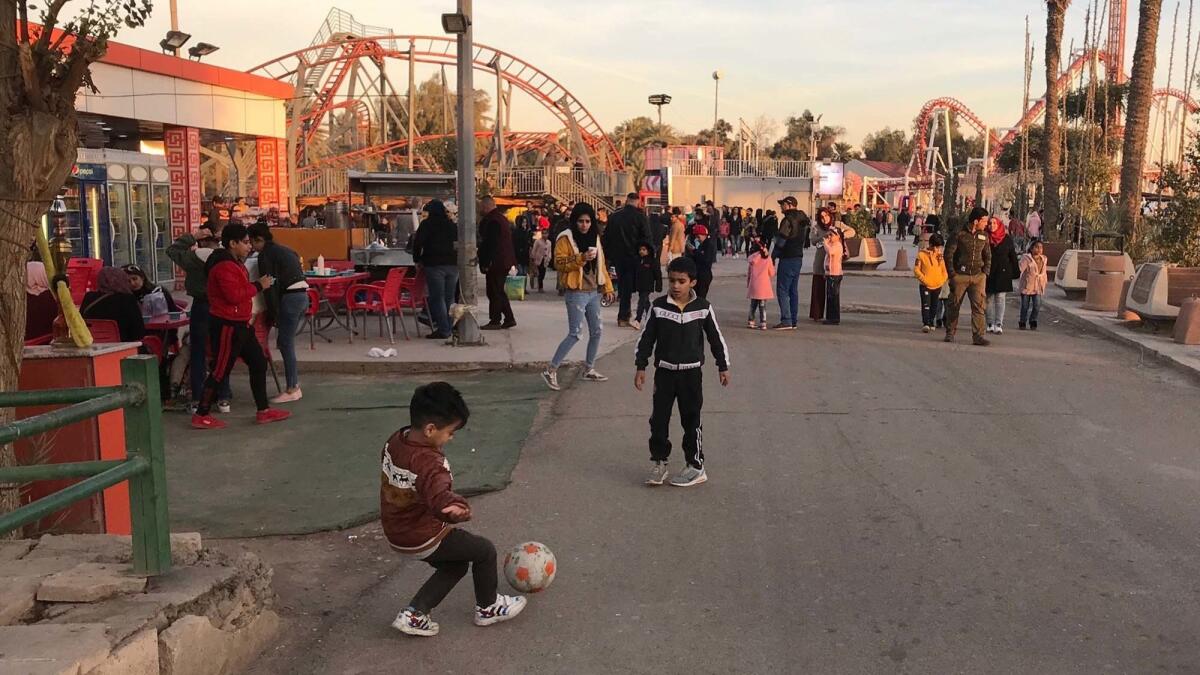
More to Read
Sign up for Essential California
The most important California stories and recommendations in your inbox every morning.
You may occasionally receive promotional content from the Los Angeles Times.

